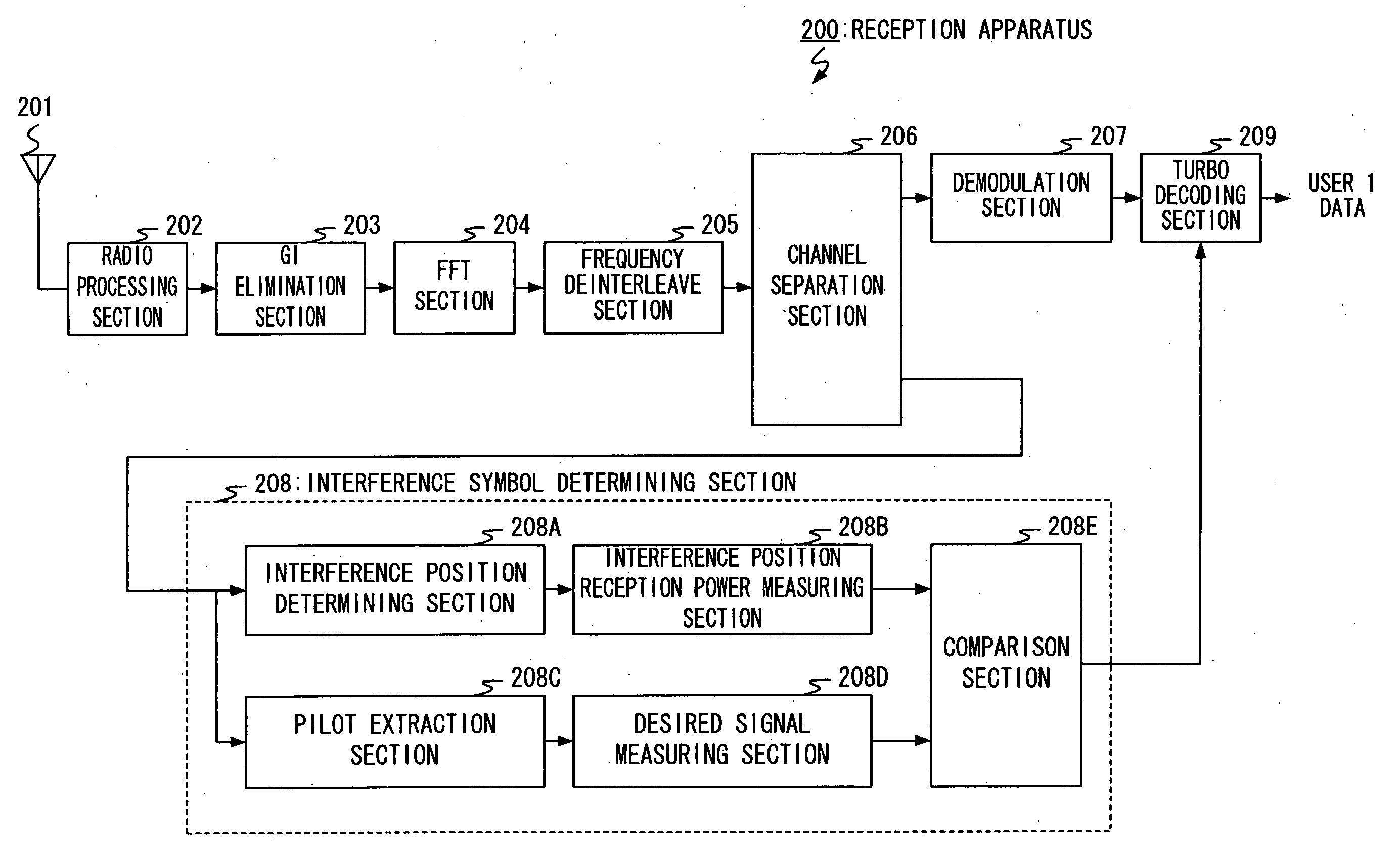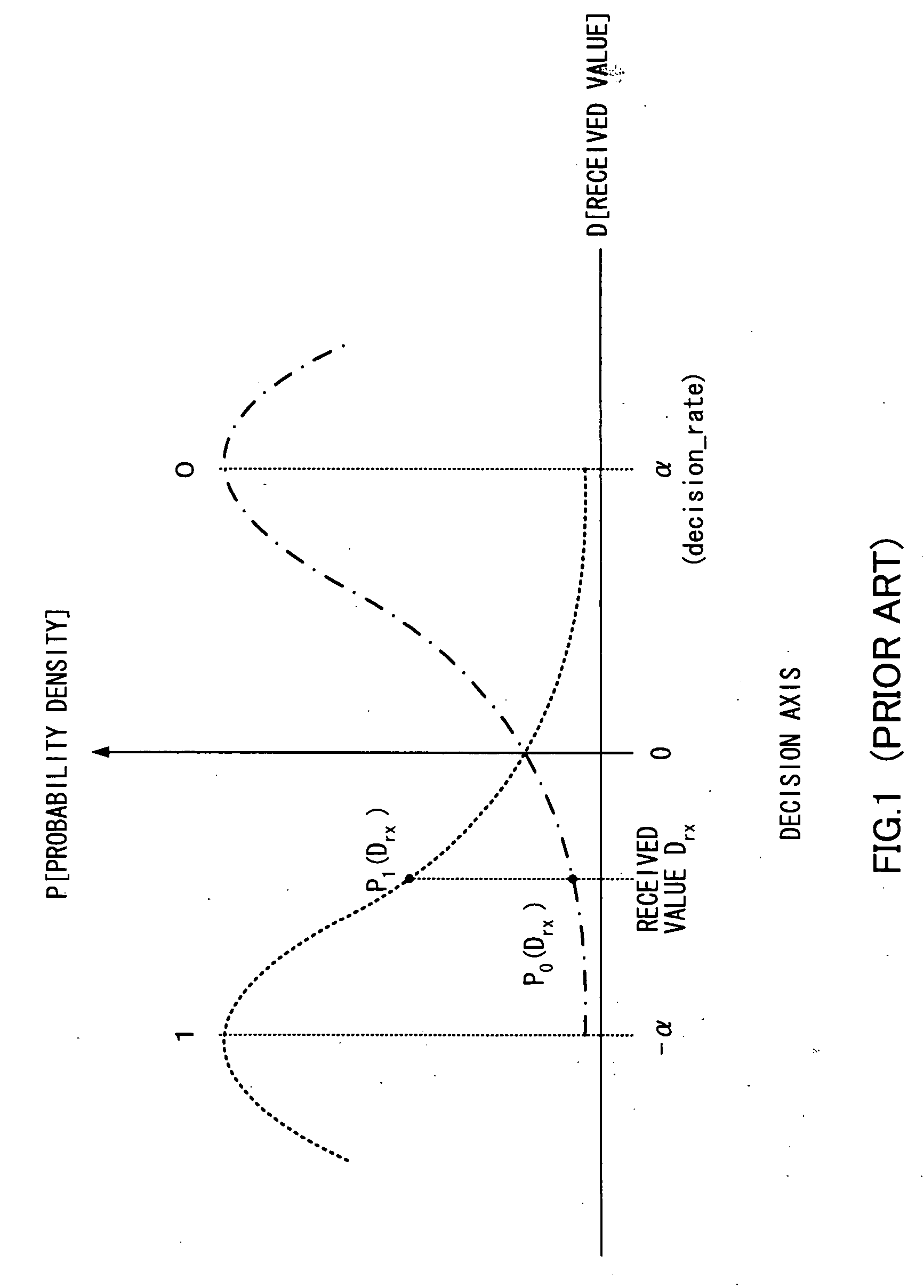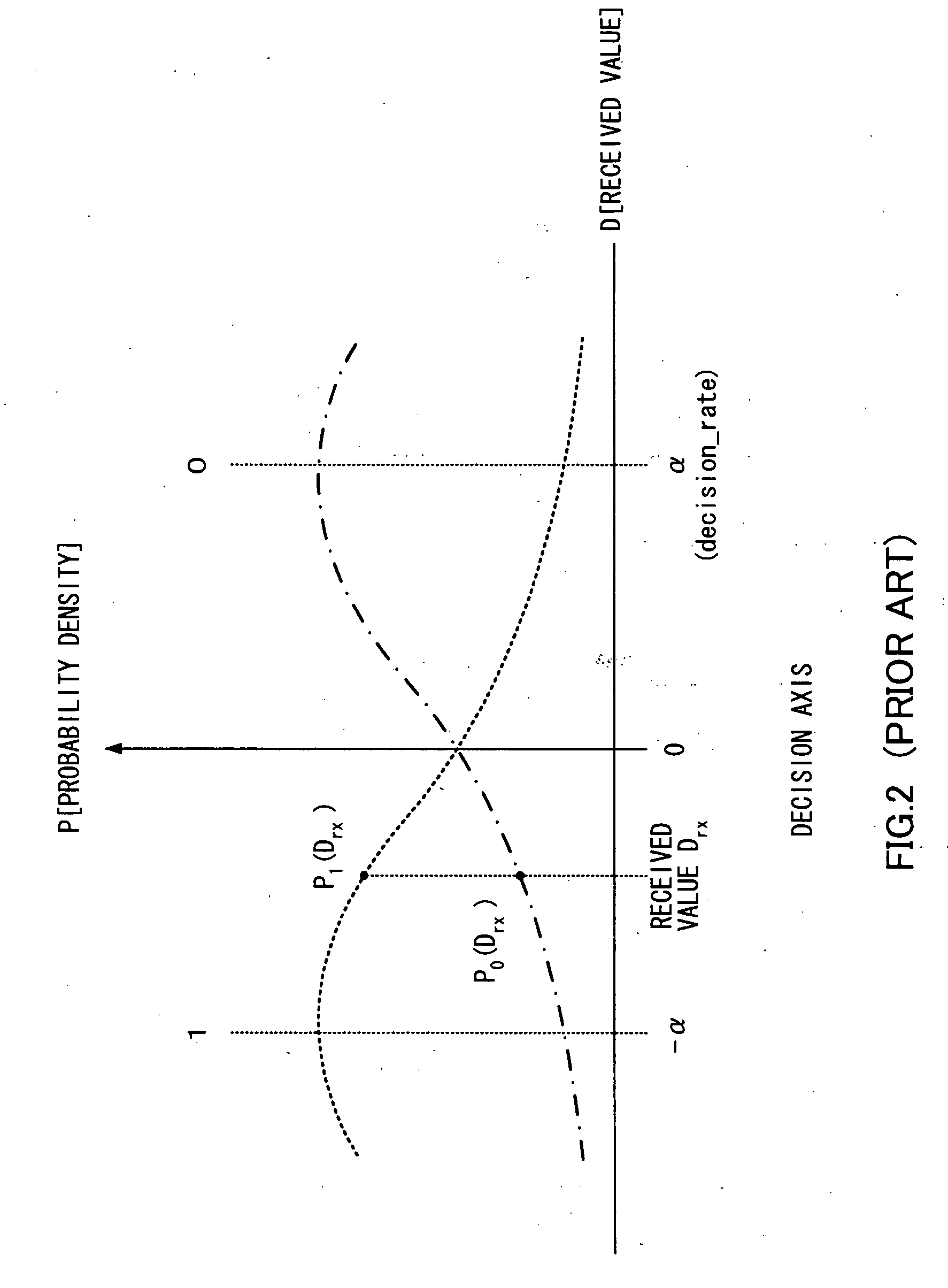Ofdm reception device and ofdm reception method
a technology of reception device and reception method, which is applied in the direction of digital transmission, transmission monitoring, electrical apparatus, etc., can solve the problems of high characteristic deterioration, collision (hit), and high probability of errors in llr values, so as to improve error correction performance, correct detection of symbols, and improve error correction performance
- Summary
- Abstract
- Description
- Claims
- Application Information
AI Technical Summary
Benefits of technology
Problems solved by technology
Method used
Image
Examples
embodiment 1
[0042] With reference to the attached drawings, embodiments of the present invention will be explained in detail below. FIG. 7 is a block diagram showing the configuration of a transmission apparatus according to a frequency hopping OFDM scheme (hereinafter referred to as “FH-OFDM scheme”) according to an embodiment of the present invention and FIG. 8 is a block diagram showing the configuration of a reception apparatus according to an FH-OFDM scheme according to this embodiment related to user 1. Here, a transmission apparatus 100 is provided for a base station and a reception apparatus 200 is provided for a communication terminal.
[0043] The transmission apparatus 100 provided for the base station is principally constructed of turbo coding sections 101-1, 101-2, modulation sections 102-1, 102-2, subcarrier mapping sections 103-1, 103-2, a multiplexer 104, a frequency interleave section 105, a serial / parallel (S / P) conversion section 106, an inverse fast Fourier transform (IFFT) se...
embodiment 2
[0070] Embodiment 1 above mainly assumes a PSK-based modulation scheme. According to Embodiment 1, the position of interference is set by notifying an interference position and then the magnitude of an interference signal is estimated from a difference between the received signal and desired signal. However, it is difficult to apply this method to a QAM-based modulation scheme in which power of each symbol of a received signal changes depending on data.
[0071] Therefore, as shown in FIG. 10 and FIG. 11, this embodiment assumes that the positions of subcarriers to which a pilot sequence is assigned are the same for the own cell and other cell and assigns sequences orthogonal to their respective sequences. Resource assignment of users and pilots of a base station of the own cell is shown in FIG. 10 and that in the other cell is shown in FIG. 11.
[0072] By so doing, it is possible to measure average power of the own cell and other cell by the terminals of user 1 and user 2.
[0073] Furt...
embodiment 3
[0076] In Embodiments 1 and 2, an interference position can be detected by decoding an interference position notification signal on the receiving side. This embodiment decides an interference position and estimates interference power by deciding power of a received signal against a threshold.
[0077] A transmission apparatus of this embodiment is shown in FIG. 14. Unlike the transmission apparatus 100 in FIG. 7, no adjacent interference position notification signal generation section 111 is connected to the transmission apparatus 400.
[0078] Suppose the reception apparatus sets a threshold assuming that a value obtained by subtracting power of an actually received symbol from power of the received signal obtained from a pilot is interference signal power+noise power per symbol and treats a symbol position exceeding the threshold as an interference received symbol.
[0079] This interference power+noise power per symbol can be expressed by the following Expression:
ΔPr(k,m)=(|r(k,m)|−|h...
PUM
 Login to View More
Login to View More Abstract
Description
Claims
Application Information
 Login to View More
Login to View More - R&D
- Intellectual Property
- Life Sciences
- Materials
- Tech Scout
- Unparalleled Data Quality
- Higher Quality Content
- 60% Fewer Hallucinations
Browse by: Latest US Patents, China's latest patents, Technical Efficacy Thesaurus, Application Domain, Technology Topic, Popular Technical Reports.
© 2025 PatSnap. All rights reserved.Legal|Privacy policy|Modern Slavery Act Transparency Statement|Sitemap|About US| Contact US: help@patsnap.com



